St Louis, or Ndar as it is known in Wolof, was founded in the 17th century as a French colonial settlement, and is one of the oldest cities created by Europeans on the west coast of Africa. Its incredible history as the capital of Senegal until 1957 is part of what led to its being inscribed as a UNESCO World Heritage Site in 2000.
Today, St Louis is an outstanding example of a re-invented colonial city, drawing visitors from all over the world. My husband and I spent a week here as we travelled through Senegal on an epic overland adventure in 2012. It’s a vibrant, lively, colourful city that seems to infect its visitors with its charm. We wandered along the bougainvillea-lined streets with our cameras, marvelling at the decaying beauty of the colonial architecture. A small tree sprouting from a disintegrating gutter caught my eye; I turned a few corners and watched fisherman arranging their nets on one of the colourful pirogues as it bobbed in the water. It is easy to see why St Louis is known as the Venice of Africa. The city is made up of three distinct areas, with the heart of the old colonial city being on the tiny island where we spent most of our time. To the west, a narrow strip of sand known as the Langue de Barbarie runs down the coast from Mauritania, sheltering the island. To the East lies the mainland, a casual urban sprawl, and beyond it a maze of tidal marshes.
We stopped for a coffee at a quiet café and chatted with an old man relaxing in the shade. Herds of goats and sheep wandered lazily through the street, nibbling on weeds and litter. There was a lot to love about St Louis.
Top 5 things I love about St Louis:
1. The Faidherbe bridge
This is the city’s most recognisable landmark, a long series of graceful arches spanning the 500-odd meters between the mainland and the island. It’s over 100 years old, and several urban legends have sprung up over time about it, including that it was designed by Gustave Eiffel and intended for a bridge over the Danube, but found to be unsuitable and sent instead to Senegal.

The recently renovated Faidherbe bridge in St Louis, Senegal

The 100 year old Faidherbe bridge is steeped in urban legend
2. The architecture
St Louis is astounding – it’s full of crumbling 19th-century French colonial villas with shaded courtyards and carved wooden balconies designed for the heat. Some have collapsed entirely; others are desperately in need of restoration. Several have been converted into boutique hotels. There are also some interesting 1920s Art-Deco houses and some 1950s civic buildings that, compared to the colonial style, seem cheerfully ugly.
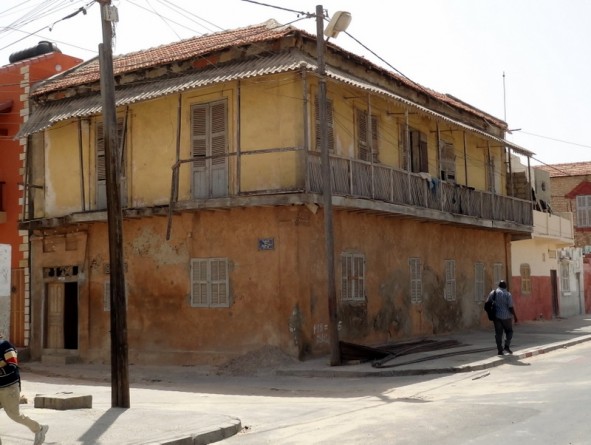
French colonial buildings in St Louis
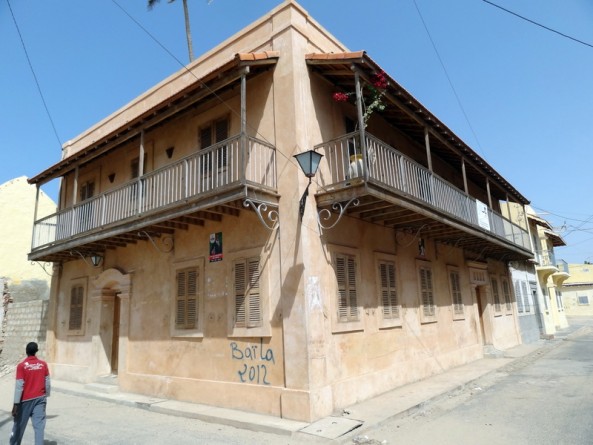
The wooden balconies of the old French colonial buildings are particularly beautiful

Some older buildings are in need of restoration
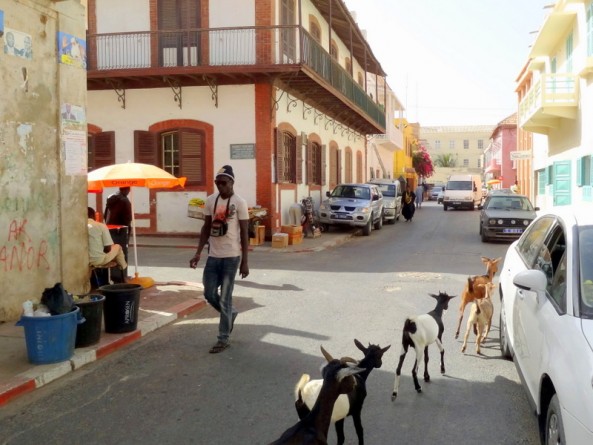
Goats wander the streets of St Louis
3. The cafes and patisseries
There are plenty of places to get a good cup of coffee and a decadent slice of cake or pastry in St Louis. Most of the better hotels have cafes where you can happily while away a few hours getting steadily more caffeinated and watching the passers-by. Our favourite was the well known Aux Délices du Fleuve, where we munched chocolate croissants for breakfast while sorting out our paperwork.

Shady cafes are the perfect spot for relaxing
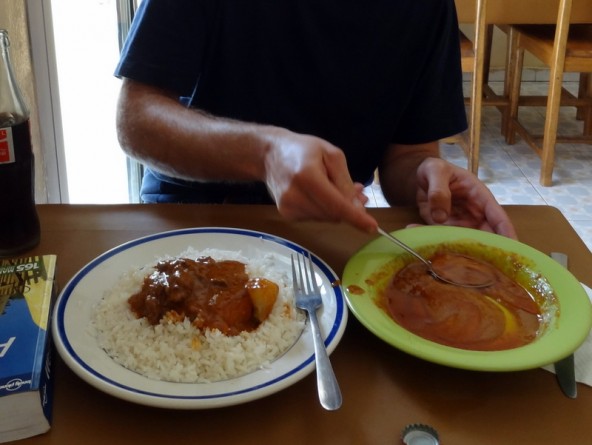
Mafe - a stew of chicken in a spicy peanut butter sauce - delicious!
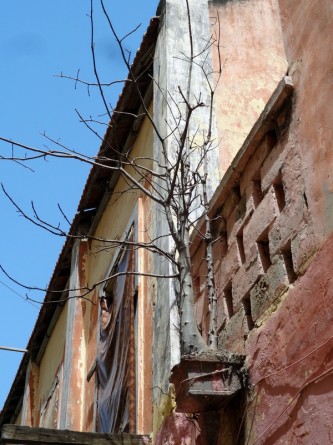
A tree sprouting from a high gutter
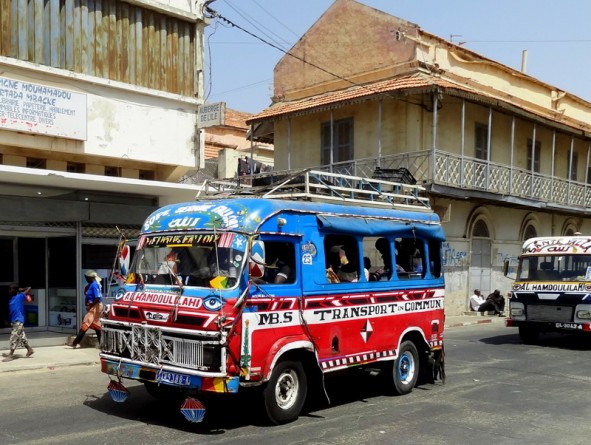
The brightly painted buses provide a splash of colour
4. Pirogues
These flat-hulled wooden fishing boats are found in cheerful clusters round the island. They are painted in vivid colours and usually decked in the national flag.
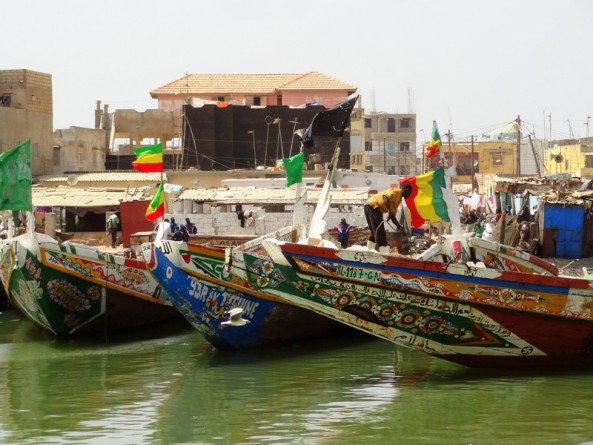
Fishing from the wooden pirogues provides an income for many St Louis inhabitants
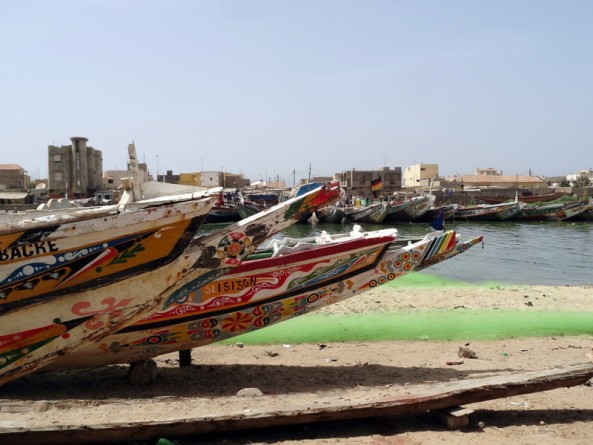
These boats were brought up on to the beach for repairs
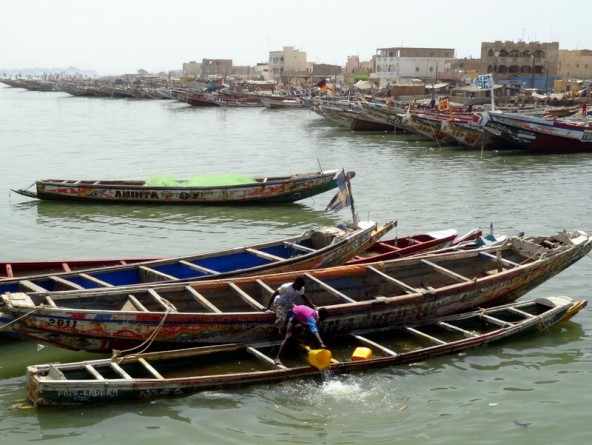
Fishermen desperately bale water from a sinking pirogue
5. The beaches
The Langue de Barbary stretches as a line of dots and dashes down from Mauritania to Senegal, sheltering St Louis from the Atlantic Ocean. On the mainland, the beautiful beaches continue with warm, calm water and soft sand dotted with palm trees. There are several low-key resorts near the entrance to the National Park Langue de Barbarie, just south of the city where you can chill out in the sun and recuperate after a hard day sightseeing.
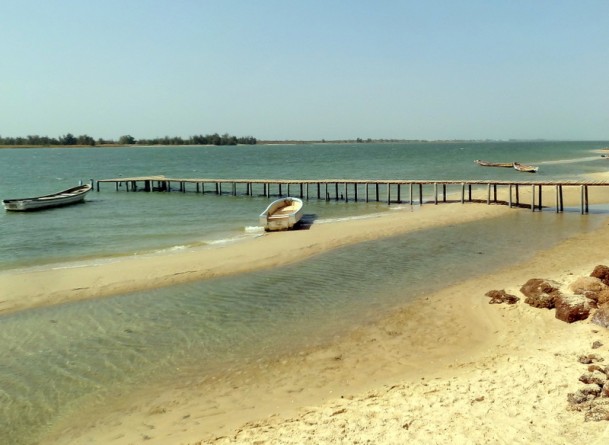
The wide, flat beaches around St Louis are perfect for a lazy swim
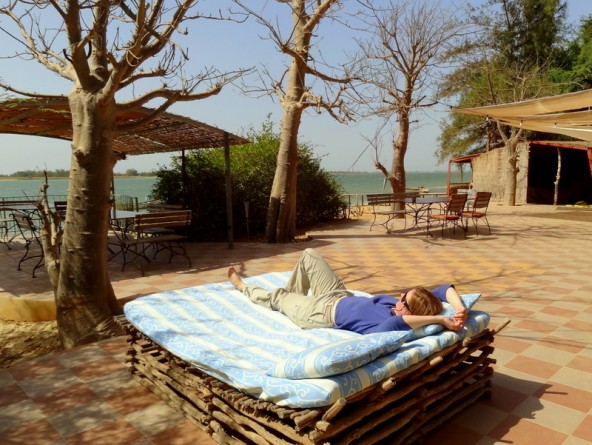
Relaxing on the patio at Zebrabar
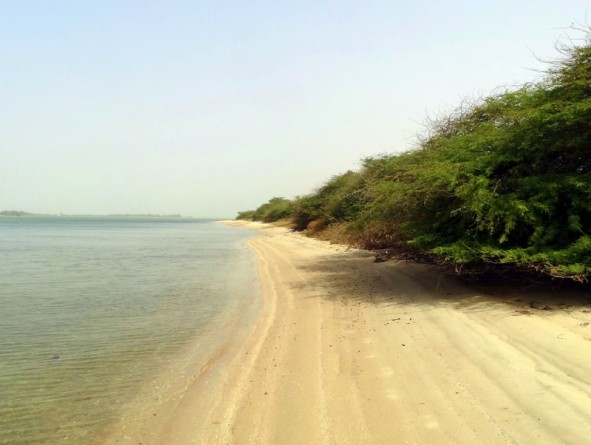
Just outside the National Park Langue de Barbarie, south of the city
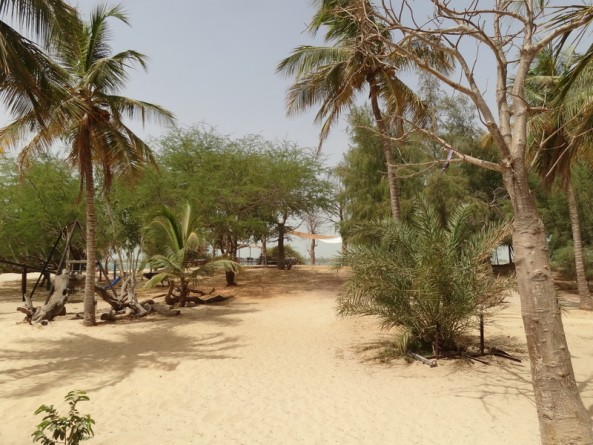
There are usually shady spots to be found for the afternoon
Read more about our African overland adventure at www.moonspaghetti.com















